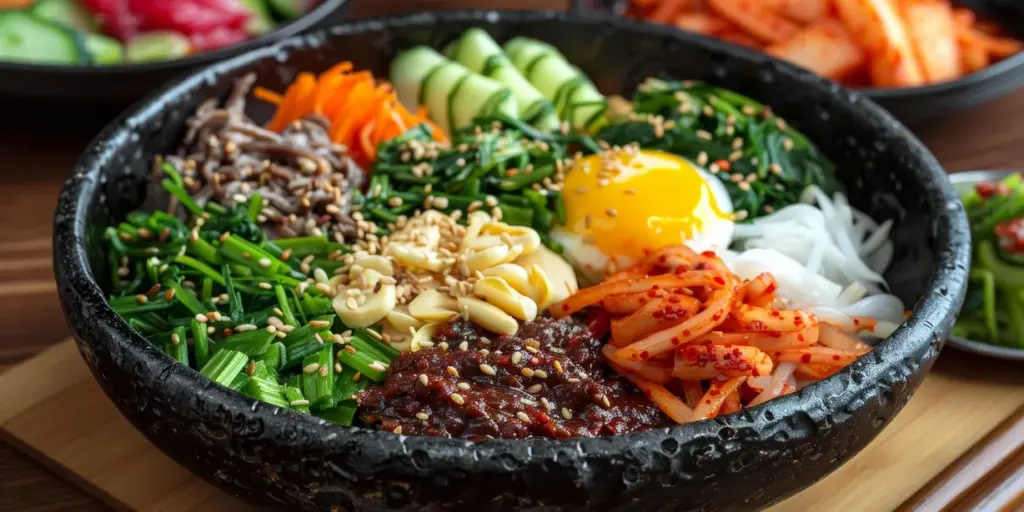Exploring the Bold and Spicy Flavors of Korean Cuisine
Korean cuisine is a vibrant and flavorful culinary tradition that has captivated taste buds around the world. The intricate balance of sweet, sour, salty, bitter, and spicy flavors make it a unique and unforgettable gastronomic experience. Whether you are a foodie, an adventurous traveler, or someone looking to expand your culinary horizon, Korean cuisine offers something for everyone.
The Rich History of Korean Cuisine
Korean cuisine has a history that spans over a thousand years, with influences from various dynasties, cultures, and regions. This rich history is reflected in the diverse dishes and cooking techniques that define Korean food today. The cuisine is deeply rooted in the country’s traditions and rituals, showcasing the importance of food in Korean culture.
Traditional Korean meals are composed of a variety of side dishes known as ‘banchan,’ which accompany a bowl of rice and the main dish. These side dishes often include fermented vegetables like kimchi, pickled radishes, and various types of seasoned greens. The use of fermented ingredients is a cornerstone of Korean cuisine, providing depth of flavor and nutritional benefits.
Kimchi: The Quintessential Korean Dish
No exploration of Korean cuisine would be complete without mentioning kimchi. This fermented vegetable dish, usually made from napa cabbage and Korean radishes, is seasoned with a mixture of chili pepper, garlic, ginger, and scallions. Kimchi is not only a staple in Korean households but also a symbol of Korean culinary identity. It is rich in vitamins, fiber, and probiotics, making it a healthy addition to any diet.
There are numerous varieties of kimchi, each with its own unique flavor profile. Some are spicy, while others are milder; some are made with seafood, while others are strictly vegetarian. The versatility of kimchi makes it a beloved dish that can be enjoyed in many forms, from soups and stews to pancakes and stir-fries.
Popular Korean Dishes You Must Try
Bulgogi: This marinated beef dish is a favorite among locals and visitors alike. The term ‘bulgogi’ translates to ‘fire meat,’ referring to the grilling method used to cook the thinly sliced beef. The marinade typically includes soy sauce, sugar, sesame oil, garlic, and pepper, resulting in a savory and slightly sweet flavor.
Bibimbap: A colorful and nutritious dish, bibimbap consists of rice topped with an assortment of vegetables, meat, and a fried egg, all mixed together with gochujang (Korean chili paste). The word ‘bibimbap’ means ‘mixed rice,’ and it offers a harmonious blend of flavors and textures in every bite.
Tteokbokki: These spicy rice cakes are a popular street food in Korea. Tteokbokki is made with cylindrical rice cakes simmered in a sweet and spicy sauce made from gochujang, soy sauce, and sugar. It is often garnished with boiled eggs, fish cakes, and green onions for added flavor and texture.
The Art of Korean Barbecue
Korean barbecue is a social dining experience that involves grilling meat, usually beef, pork, or chicken, at the table. This communal way of eating allows diners to cook their own food and enjoy a variety of dipping sauces and side dishes. Popular cuts of meat for Korean barbecue include samgyeopsal (pork belly), galbi (short ribs), and dak galbi (spicy chicken).
The interactive nature of Korean barbecue makes it a popular choice for gatherings with family and friends. The combination of grilled meat, fresh vegetables, and savory sauces creates a memorable and satisfying meal that is sure to please.
Traditional Korean Beverages
Korean cuisine is not complete without its traditional beverages. Among them, soju and makgeolli are the most well-known. Soju is a clear, distilled liquor made from rice, wheat, or barley, and it is often compared to vodka. Makgeolli, on the other hand, is a milky, fermented rice wine with a slightly sweet and tangy flavor. Both beverages are commonly enjoyed with Korean meals and are an integral part of the dining experience.
In addition to alcoholic drinks, Korea also has a variety of traditional teas such as omija-cha (five-flavor berry tea), yujacha (citron tea), and boricha (barley tea). These teas are not only delicious but also offer various health benefits, making them a popular choice among Koreans and visitors alike.
Traveling to Experience Korean Cuisine
For those who want to fully immerse themselves in Korean cuisine, traveling to South Korea is the ultimate experience. From bustling street markets to high-end restaurants, Korea offers a diverse range of dining options that cater to all tastes and budgets. Cities like Seoul, Busan, and Jeonju are renowned for their culinary scenes, each offering unique regional specialties.
Exploring Korea’s street food markets is a must-do activity for any food lover. Places like Gwangjang Market in Seoul and Jagalchi Fish Market in Busan offer an array of street food delights, from hotteok (sweet pancakes) to eomuk (fish cakes). These markets are perfect for tasting a variety of dishes and experiencing the vibrant food culture first-hand.
Cooking Korean Food at Home
If traveling to Korea is not an option, bringing the flavors of Korean cuisine into your own kitchen is a great alternative. Many Korean dishes are easy to prepare at home with the right ingredients and recipes. Online resources and cookbooks provide step-by-step instructions for making classic dishes like kimchi, bulgogi, and bibimbap.
Asian grocery stores and online retailers offer a wide range of Korean ingredients, making it easier than ever to recreate authentic Korean dishes at home. Cooking Korean food can be a fun and rewarding experience that allows you to explore new flavors and techniques while enjoying the comforts of home.
Conclusion
Korean cuisine is a culinary adventure that offers a rich tapestry of flavors and textures. From the iconic kimchi to the interactive experience of Korean barbecue, there is something for everyone to enjoy. Whether you are exploring the vibrant food markets of Seoul or cooking up a storm in your own kitchen, the bold and spicy flavors of Korean cuisine are sure to leave a lasting impression.
So, why not embark on a gastronomic journey and discover the delightful world of Korean cuisine? You won’t be disappointed.



